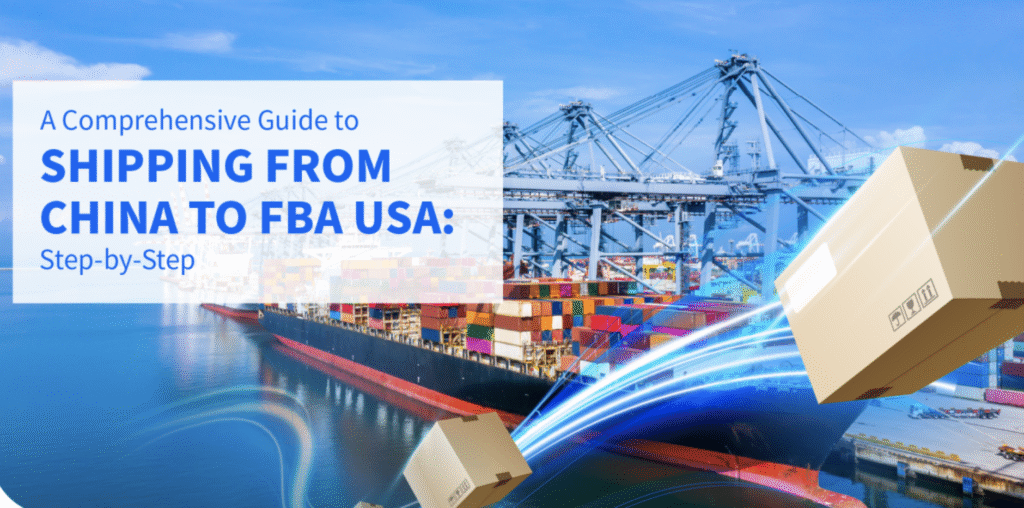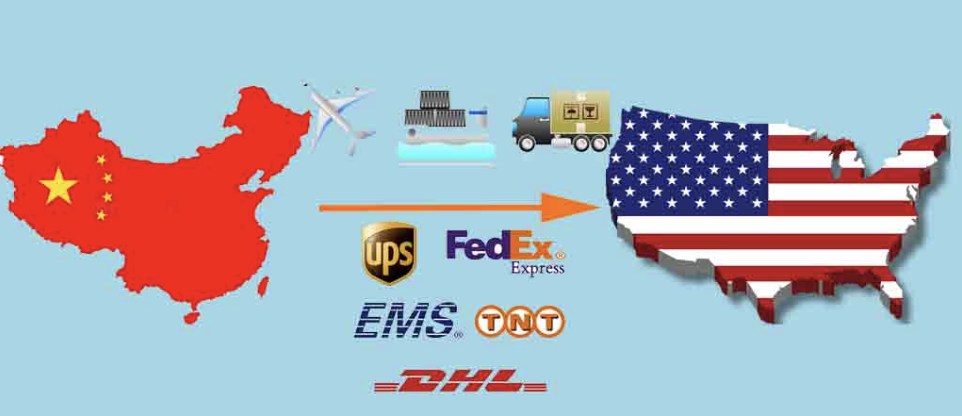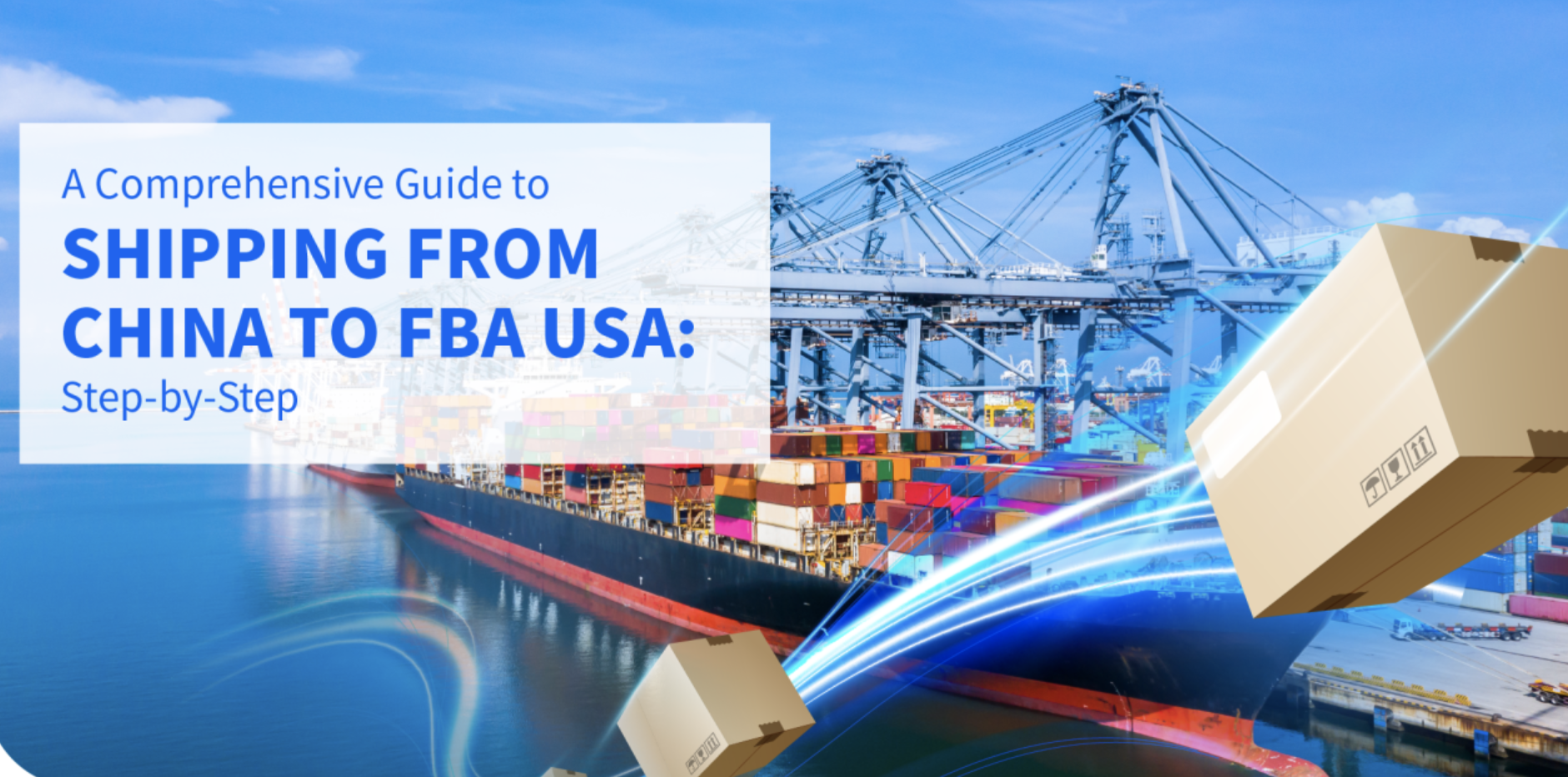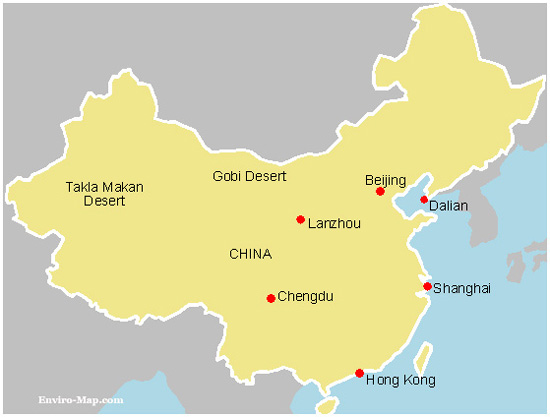How Long Does It Take to Ship From China to USA? Complete Guide
“Simoosourcing: Freight Forwarding From China to USA“
When looking for reliable logistics partners, Simoosourcing is a growing name you should know.
Besides product sourcing and private labeling, Simoosourcing also offers a comprehensive freight forwarder service from China to the USA—tailored for small businesses, Amazon FBA sellers, and eCommerce brands.
What Simoosourcing Offers:
- Sea Freight (LCL/FCL): Ideal for cost-effective bulk shipping with customs clearance support.
- Air Freight: For medium-volume goods requiring faster transit.
- Express Courier Integration: Seamless use of DHL, UPS, FedEx with discounted commercial rates.
- Door-to-Door Delivery: They handle everything from supplier pickup to U.S. warehouse delivery.
- Amazon FBA Prep & Delivery: They prepare and forward shipments directly to Amazon fulfillment centers with FBA labeling and packaging.
Why Choose Simoosourcing for Freight Forwarding?
- One-stop service: From sourcing to delivery, everything is managed under one roof.
- Transparent Pricing: No hidden fees—detailed quotes are provided upfront.
- Dedicated Support: English-speaking logistics managers assist throughout the process.
- Customs Documentation: All import paperwork handled, minimizing delays.
This makes Simoosourcing an excellent choice for small- to mid-size importers who want a hassle-free, fully managed shipping solution from China to the USA.
💡 Pro Tip: If you’re already sourcing products with Simoosourcing, using their in-house freight forwarding can save you time, coordination effort, and money—especially during peak shipping seasons.
You can contact us through our WhatsApp number here: 008615057916304
Introduction to International Shipping

If you’re sourcing products globally, one of the first questions you’ll ask is, how long does it take to ship from China to USA? Whether you’re an Amazon seller, Shopify dropshipper, or importing goods in bulk, understanding the shipping timeline is critical to managing your business effectively.
From air freight to sea cargo to express couriers, each shipping method offers a different delivery window—and each comes with its own pros and cons.
Let’s break down all the options so you can plan your supply chain like a pro in 2025.
Why Shipping From China to USA is So Popular
- Manufacturing hub: China remains the world’s biggest factory for everything from electronics to clothing.
- Cost efficiency: Products are often cheaper due to lower labor and material costs.
- Customization: Many Chinese suppliers offer OEM and private labeling for brands.
- eCommerce growth: Over 50% of global Amazon sellers source from China.
Key Factors That Affect Shipping Time
Several factors influence how quickly a package or cargo reaches the U.S.:
- Shipping method used (air, sea, courier)
- Supplier’s processing time
- Customs clearance in both countries
- Final delivery destination (e.g., coastal vs inland U.S.)
Average Shipping Times by Method
Standard Sea Freight Shipping Time
Sea freight is the most economical option—but also the slowest.
- Typical Transit Time: 25–40 days
- Ports Used: Shanghai, Shenzhen, Ningbo (China) to LA, Long Beach, New York (USA)
- Best For: Bulk shipments, large volume orders
Add 7–10 days for supplier prep + customs clearance.
Air Freight Shipping Time
This option balances speed and cost.
- Typical Transit Time: 7–12 days
- Airports Used: Beijing, Guangzhou, Hong Kong to LAX, JFK, Chicago O’Hare
- Best For: Medium-sized, time-sensitive shipments
Higher cost but much faster than sea.
Express Courier Shipping (DHL, FedEx, UPS)
The fastest and easiest—ideal for small parcels.
- Typical Transit Time: 3–7 business days
- Includes customs clearance
- Best For: eCommerce orders, samples, documents
Costs can rise quickly based on weight and size.
Comparison Table: Shipping Methods and Timeframes
| Shipping Method | Estimated Time | Best Use Case | Avg Cost (per kg) |
|---|---|---|---|
| Sea Freight (LCL) | 30–40 days | Bulk orders, low urgency | $0.5 – $2.00 |
| Sea Freight (FCL) | 25–35 days | Full container, large volumes | $0.2 – $1.50 |
| Air Freight | 7–12 days | Medium loads, faster delivery | $4 – $8 |
| Express Courier | 3–7 days | Small orders, urgent shipments | $7 – $15 |
Top Factors That Affect Delivery Time
Customs Delays
Even if your goods ship fast, they can get stuck at customs in either China or the U.S. Causes include:
- Incomplete paperwork
- Restricted or banned products
- Random inspections
Pro Tip: Use a freight forwarder to handle documents properly.
Supplier Processing Time
Some factories need 3–15 days to produce or prepare your order before shipping. Always confirm the lead time before placing an order.
Shipping Season and Peak Periods
Holiday rush and events like Chinese New Year or Black Friday can delay shipping by weeks.
- Peak months: January–March and October–December
- Best time to ship: April–September
Port Congestion and Global Events
Events like the COVID-19 pandemic, Suez Canal blockage, or dockworker strikes can add unexpected delays to your shipping timeline.
Understanding Incoterms and Their Impact on Delivery
FOB, EXW, CIF – What Do They Mean for You?
When you ship from China to the USA, the terms in your contract—known as Incoterms—play a major role in how fast and efficiently your goods are delivered.
- FOB (Free on Board): The supplier delivers the goods to the port. The buyer takes over from there. This is the most common term for international trade.
- EXW (Ex Works): The buyer arranges everything from the factory door onward. Slow if you don’t have logistics experience.
- CIF (Cost, Insurance, Freight): The seller pays for delivery to the U.S. port. Offers convenience but less control.
Why it matters: Your Incoterm affects not just cost—but also who is responsible for customs clearance, delays, and delivery errors.
Real-Life Examples of Shipping From China to USA

Example 1: Sea Freight for Amazon FBA
An Amazon seller orders 3,000 yoga mats from a supplier in Guangzhou under FOB terms.
- Supplier processing time: 10 days
- Sea transit to LA port: 25 days
- Customs clearance and last-mile delivery to FBA: 7 days
Total time: ~42 days
Example 2: Express Delivery for eCommerce Dropshipping
A Shopify dropshipper orders 10 sample T-shirts from a factory in Shenzhen using DHL Express.
- Processing: 2 days
- Transit: 5 days
Total time: ~7 days
How to Choose the Best Shipping Method
Balancing Speed, Cost, and Volume
Here’s how to decide:
- Small, urgent shipments: Use Express (DHL, FedEx)
- Mid-size, moderate urgency: Use Air Freight
- Bulk orders with low urgency: Use Sea Freight (LCL or FCL)
Tip: Use air freight during peak seasons if sea routes are congested.
Tips for First-Time Importers
- Start small: Test with a few cartons or samples before going full container.
- Get quotes from multiple freight forwarders
- Track shipments using digital tools like 17Track, AfterShip, or the logistics company’s dashboard
- Plan buffer time: Always add 7–10 days for unexpected delays.
Using Freight Forwarders vs Direct Shipping
Working with a freight forwarder helps simplify the entire process. They:
- Book space with carriers
- Handle customs clearance
- Arrange door-to-door delivery
If you’re new to global sourcing, a forwarder helps you avoid mistakes that can delay your delivery for weeks.
Direct shipping may be faster or cheaper in some cases, but it requires experience.
Table: Cost vs Time Breakdown by Shipping Type
| Shipping Type | Avg Delivery Time | Cost (USD/kg) | Risk Level | Ideal For |
|---|---|---|---|---|
| Sea Freight (FCL) | 25–35 days | $0.20–$1.50 | Low | Large, stable supply chains |
| Sea Freight (LCL) | 30–40 days | $0.50–$2.00 | Medium | Small-medium importers |
| Air Freight | 7–12 days | $4–$8 | Medium | Medium volumes, faster delivery |
| Express Courier | 3–7 days | $7–$15 | Low | Samples, urgent shipments |
Tips to Reduce Shipping Delays From China to USA
Shipping from China to the USA is generally reliable, but delays can still happen due to customs, port congestion, supply chain bottlenecks, or even paperwork issues. Fortunately, there are proven ways to minimize the chances of delays and keep your delivery timelines on track.
Here are the top strategies to reduce shipping delays from China to the U.S. in 2025:
1. Work With Reliable and Experienced Suppliers
Your shipping process starts with your supplier. Delays often begin due to production issues, poor packaging, or late dispatch.
What to do:
- Choose suppliers with strong track records and verified ratings
- Set clear lead time expectations in your contract
- Request photos or videos of the product before shipment
- Communicate consistently and check updates before production ends
2. Use Simoosourcing or Trusted Freight Forwarders
A good freight forwarder acts as your logistics partner—handling everything from pickup to delivery, customs paperwork, and cargo consolidation.
Why it works:
- Ensures proper documentation
- Helps book cargo space early (important during peak season)
- Offers door-to-door tracking and issue resolution
Tip: As mentioned earlier, Simoosourcing offers end-to-end freight forwarding services from China to the USA, making it easier to manage your entire logistics process under one roof.
3. Avoid Peak Shipping Seasons When Possible
Delays are more common during:
- Chinese New Year (Jan–Feb)
- Golden Week (October)
- Q4 Holiday Season (Oct–Dec)
Plan ahead:
- Order in advance before major holidays
- Add 2–4 weeks of buffer time during these periods
- Work with suppliers who stay open during off periods
4. Ensure Complete and Accurate Documentation
Incorrect paperwork is a top reason for customs delays. Incomplete invoices, incorrect HS codes, or missing certificates can hold your shipment for days—or longer.
Checklist:
- Commercial invoice
- Packing list
- Bill of lading (B/L)
- Import/export licenses (if needed)
- HS code (Harmonized System code)
Pro Tip: Ask your freight forwarder or sourcing agent to review all documentation before the goods are shipped.
5. Choose the Right Shipping Method Based on Your Timeline
Each shipping method has pros and cons:
- Sea freight is cost-effective but slower and vulnerable to port delays
- Air freight is faster and avoids port congestion but costs more
- Express courier is best for speed and small volumes
Optimize by:
- Splitting large orders: send a portion by air, the rest by sea
- Upgrading to air during peak periods
- Using express for urgent shipments or samples
6. Track Shipments in Real-Time
Always use a platform that provides end-to-end tracking, such as:
- Alibaba logistics dashboard (for Trade Assurance orders)
- Freight forwarder portals (e.g., Simoosourcing, Flexport)
- Courier apps (DHL, FedEx, UPS)
- Universal tracking tools like 17Track or AfterShip
Why it matters: You can catch delays early, communicate with customers, and adjust plans if needed.
7. Communicate Regularly With All Parties Involved
Keep communication open between:
- Your supplier or factory
- Your freight forwarder
- Your customs broker (if you have one)
Set check-ins at each stage:
- When production starts
- When goods are ready
- After pickup and port clearance
- After departure and before arrival
This proactive approach prevents surprises and builds accountability.
8. Insure Your Shipments
Shipping insurance doesn’t prevent delays, but it protects you in case of damage, loss, or theft during transit—which can cause long disruptions.
Types of insurance:
- Basic carrier liability (often limited)
- Full cargo insurance (covers goods and freight cost)
Pro Tip: Most freight forwarders offer affordable insurance as part of your shipping quote.
9. Consolidate Shipments Smartly
If you’re buying from multiple suppliers, consolidate your orders into one shipment to:
- Lower cost per unit
- Reduce customs checks
- Minimize paperwork errors
Sourcing agents like Simoosourcing often offer consolidation services that help streamline this process, combining goods into one master shipment.
10. Plan Buffer Time Into Your Fulfillment Schedule
Despite best efforts, unexpected delays can still happen. Always build 7–14 days of buffer time into your delivery promises, especially for retail launches, inventory restocks, or FBA deadlines.
Final Thought
By following these tips, you’ll reduce risk, avoid surprises, and build a more resilient supply chain when shipping from China to the USA. Remember, success in international shipping is all about planning ahead, working with the right partners, and staying informed at every step of the journey.
Conclusion
So, how long does it take to ship from China to USA? The answer depends on the shipping method, time of year, and logistics management. On average:
- Sea freight takes 25–40 days
- Air freight takes 7–12 days
- Express shipping takes 3–7 days
To ship smarter in 2025, plan ahead, choose the right shipping option, and work with trustworthy suppliers and freight forwarders. A few smart moves can help you save time, money, and headaches down the line.
If this guide helped you understand shipping times from China to the U.S., don’t forget to share it with your fellow eCommerce sellers or sourcing partners.
FAQs About Shipping from China to USA
1. What’s the fastest way to ship from China to the US?
Express couriers like DHL, FedEx, and UPS offer the fastest delivery, typically in 3–7 business days.
2. Can I track my shipment from China?
Yes, most logistics companies offer tracking. Use platforms like 17Track or your freight forwarder’s portal.
3. How much does it cost to ship from China to USA?
Costs vary based on method, weight, and urgency. Sea freight can cost as low as $0.20/kg, while air can go up to $15/kg.
4. What should I do if my shipment is stuck in customs?
Contact your freight forwarder or the carrier immediately. Provide all necessary documents like invoices, packing lists, and import licenses.
5. Is shipping from China to USA reliable in 2025?
Yes, it’s very reliable—especially if you plan ahead, work with trusted partners, and stay updated on international shipping conditions.







